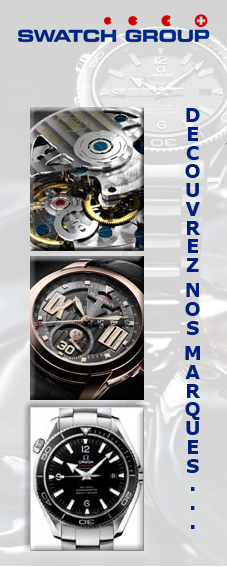|
|
Manufacture Royale - 1770
Named 1770 after the year Manufacture Royale was founded, this timepiece newly embodies the daring and excellence which define the Manufacture. Its restrained and thoughtfully elaborated form is the continuation of a generous and creative style, though contours have been softened and remodelled to propose a watch that is both sober and contemporary. Entirely developed and manufactured in-house, its haute horlogerie movement incorporates a splendid flying tourbillon.
An illustrious figure of the Enlightenment as well as an entrepreneur, Voltaire established his Manufacture Royale in 1770, close to Geneva. Several thousand timepieces were produced in the Manufacture's workshops, each to the highest standard. Some were the work of renowned watchmakers, including the great Jean-Antoine Lépine. The new 1770 brings together this visionary spirit with its hallmark of excellence, and modern watchmaking with its respect for tradition. Unique in every way, this is a timepiece for discerning connoisseurs with affirmed taste. Wholly manufactured in Switzerland, it highlights the traditional expertise of a centuries-old mechanical art.
In-house flying tourbillon movement
Since its creation, Manufacture Royale has devised, produced and decorated all its movements in the finest Swiss watchmaking tradition. The new MR03 calibre inside the 1770 watch is no exception to this rule. Developed from a blank page by the Manufacture's engineers and master-watchmakers, it showcases one of watchmaking's most refined technical sophistications: the flying tourbillon. Invented circa 1800 by Abraham-Louis Breguet to improve a movement's timekeeping precision, the tourbillon is a system which enables the escapement to rotate on itself and therefore smooth variations in rate. Most often, the tourbillon is held between two bridges. The more complex and refined flying tourbillon is connected to the movement at just one point. This aesthetically pleasing and visually spectacular construction leaves the observer free to admire in all its splendour the movement of the escapement and the superlative finishing of its parts. An essential component since it determines the watch's precision, here the escapement embraces the ultimate innovation with a pallet fork and escape wheel in silicon. Thanks to its resistance to variations in temperature and to magnetic fields, among other qualities, silicon makes an important contribution to the movement's performance. In this instance, the calibre also incorporates a screwed balance and a flat balance spring. The flying tourbillon, which makes one revolution in 60 seconds, is positioned asymmetrically at 7 o'clock. This unconventional choice creates a unique visual tension that gives the watch all its personality. In addition to hours and minutes, the 1770 incorporates a power-reserve indicator for an autonomy of 108 hours or four and a half days. Comprising 208 parts, the MR03 is hand-wound.
An array of hand-finishing
Manufacture Royale also cultivates the art of haute horlogerie through the care devoted to the finishing and decorating of each individual component by hand. This is expressed in the MR03 by the fine-sandblasted bridges and mainplate, which are also hand-chamfered and black-polished with satin or perlage finish, and by straight-grained flanks on the inside and outside.
The back of the movement is embellished with Côtes de Genève. These are achieved by hand and measure 2.4mm wide. Such a combination of decorations transforms the movement. Rays of light dart from it, while the succession of different surfaces creates a fascinating visual effect.
A pure dial
This meeting of minds several centuries apart is also evidenced by the dial. Whereas previous collections by Manufacture Royale intentionally left the movement in full view, here it is entirely covered by the dial with just an opening at 7 o'clock through which to admire the pulsations of the flying tourbillon. Opaline silvered or anthracite, depending on the version, it is circled by hour markers which have been diamond-polished by hand. The centre of the dial is purposely free from embellishment or inscription so that its colour and texture can be fully appreciated. "Manufacture Royale"is written in capital letters around the flying tourbillon together with the name of the collection, “1770”. A second iteration proposes an openworked, slate-coloured dial with different forms. More striking, its various levels lend a bolder technical dimension and offer glimpses of the movement.
The sword-shaped hands are partly satin-finished and partly polished for easy legibility.
A suspended case
Manufacture Royale is also known for the complexity and immediately identifiable design of its watches' exteriors. Comprising a great many carefully executed and hand-finished parts, they are constructed in accordance with a pre-defined principle: the movement is housed inside a case, which in turn is contained in a sometimes mobile structure. A hallmark of Manufacture Royale, this principle is captured in its essence by the 1770. Two beautifully proportioned brancards hug the case. Secured by functional, visible screws, they extend beyond it, then gently curve to form the lugs.
The eye is drawn along a succession of smooth curves, beginning with the domed crystal that protects the dial, whose gadrooned bezel delicately overflows to form a rim. Embodied by the brancards, the case middle shows rounded flanks. The crown is polished with the initials "MR" engraved in its centre. The back of the case is entirely open to reveal the splendour of the movement. Alternating polished, straight-grained and satin finishes, the exterior of the 1770 watch is a consummate example of Swiss haute horlogerie in both its aesthetic, imagined by the acclaimed watch designer Eric Giroud, and the flawless crafting and finishing of its parts. Made from 20 separate elements, the case measures 43mm in diameter.
The 1770 watch in steel comes with an anthracite or openworked, slate-coloured dial while the rose gold case is matched with an opaline silvered dial. All versions are proposed with an alligator strap with alligator lining and a pin buckle fastening.
Original language: English |
